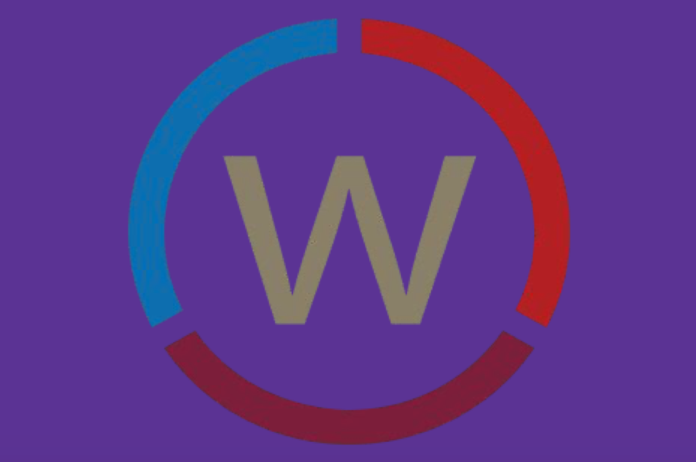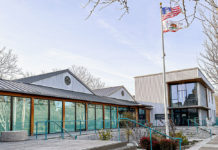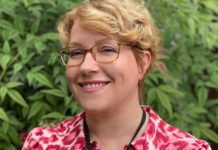The West Sonoma County Union School District (WSCUHSD) board voted Friday night to poll west county voters on support for a parcel tax to keep the schools afloat until the board can get more community input around consolidation.
Superintendent Toni Beal requested the discussion on whether to contract Greg Isom of Isom Advisors to conduct the survey after the idea for bridge-funding arose during public comment at the Wednesday town hall.
The board would need the poll completed by their Nov. 18 meeting, according to Beal. Board president Jeanne Fernandes said the Friday meeting was the only planned discussion for community input on the poll because Isom would need to begin immediately.
The poll would cost the district up to $6,500. Isom could not confirm the cost of a subsequent vote on a parcel tax Friday, but agreed the district would bear the brunt of an election in early March that trustee Diane Landry guessed could cost tens of thousands of dollars.
Whether a parcel tax would essentially only buy time for the community to come to grips with the increasing likelihood of consolidation was debated among board members and the various locals in attendance.
“We’ve asked our community for a lot of support, and a lot of fiscal support. From my point of view, the district needs to take care of the budget issue,” Beal said.
Beal said her understanding was a short-term parcel tax could tide the district over until enough studies and dialogue could happen for residents to feel prepared for consolidating. One-time funds will run out in the 2022-23 school year, leaving the district in a $2 million lurch only massive program cuts could fix currently, she said.
Chief Business Official Jeff Ogston seemed to share the view that consolidation was inevitable. He said a hypothetical parcel tax approved by voters to basically replace this year’s expiring parcel tax could cover the projected 2022-23 shortfall and absorb increases in general expenses.
This would allow the board to postpone consolidation in time for the community to get closure, according to Ogston. Beal said a two-year parcel tax of about $50 from taxpayers annually would hold the district over for two years to consolidate in the 2023-24 school year.
Board clerk Ted Walker asked if the board was just kicking the can down the road another two years when the district’s problem was structural. “If we need to consolidate, then I think we should. I feel embarrassed as a trustee to go back to the tax base and say we need another hundred bucks for two more years because we have a structural deficit, and by the way, we’re still (going to) consolidate two schools.”
Landry said she assumed the board would still have to meet the March 15 deadline to notify teachers and other staff of layoffs since the budget’s status could call for program cuts.
Fernandes said it also struck her as embarrassing to spend money calling for a vote that wasn’t guaranteed to pass and then possibly lay off teachers. “I am a little confused as to why we would be that fiscally irresponsible. We were elected to be fiscally responsible and to be looking out for our district and its finances and for the kids and their programs,” Fernandes said.
Beal asked Ogston about the possibility to use a parcel tax to treat the deficit on an ongoing basis instead of delay consolidation.
He said it was difficult to predict, but even if the district could finance two schools, the declining student population would ultimately force a decision on consolidating for programming reasons already at play. The budget is the catalyst spurring the conversation now, Ogston said.
Community debates the purpose of polling for a parcel tax
Several people expressed during public comment that the original intent of the suggestion was to tide the district over while the community and the board could authentically explore alternatives to combining schools altogether.
David Stecher said he was going to back the survey to check the pulse of the community, but he was concerned that the community’s intent was to find funding to avoid consolidation despite the critical issue of curriculum offerings.
“Even if you could figure out the funding, you’re going to have difficulty providing a curriculum at the two high schools. If you want to do the survey, that’s fine, but I think that at some point or other, the reality will catch up,” Stecher said.
Allyson Lassen asked how the board would spend money on a vote to tax residents struggling with unemployment in the pandemic. Some asked to clarify the timeline, hoping for stability through district unification or to avoid program cuts on the horizon.
“Those schools, both of them, mean so much and not just as an alumni factor or anything like that,” Jennifer Carson said, hoping to avoid consolidation. “I do think that if you give us some time, we can really create some type of thing to get some good funding and some good donation possibilities. I mean, we’ve got a million ideas going between us, the group of people that I’m talking with and there’s quite a few of us.”
Darlene Packard encouraged the board to conduct the poll, saying she understood the consolidation conversation was not new.
“The problem is that we’ve heard it for so long, that I am definitely one of them that’s like, ‘Oh yeah, we’ve heard it, it’s not going to happen.’ Well if it’s time, people are realizing that this may really happen, and now people are stepping up and they’re hearing it, and now I feel like it’s time that we need to be able to have a voice,” Packard said.
However, Jill Melendy said it would be insulting to ask residents for more money around a financial decision that, while emotional, should come as no surprise.
“I think it’s completely dishonest to say that we’re not going to consolidate and I’ve just read between the lines here and everyone wants to put text together in a voter ballot that says anything but what the reality is going to be,” Melendy said against polling residents. “Let’s begin the process of some thoughtful transition now and stop, as all you people have said before, kicking this can down the road any longer.”
Board members differ in view but approve polling
Beal made a point to clarify that the effort would be more of a poll of parts of West County than a survey. Isom said the poll cannot be limited to families because the property tax would be paid for by property owners in general.
Isom said the poll would seek about half its responses from Sebastopol locals and the other half residents of Forestville, Guerneville, Monte Rio and other towns.
Ogston addressed past public comment that families moving into the area could fill empty seats. He said he reached out to real estate agents in Sonoma County and did not find hard data to suggest the student population would increase, despite some anecdotal evidence.
Meanwhile, the surrounding feeder schools also face declining cohorts. Ogston said the districts would need about another 115 new kids just to stay flat.
Board vice president Kellie Noe supported the poll, with the caveat that the board could not predict what the data would show and she didn’t want to give people false hope. “Our partner districts have been having declining enrollment starting in the early 2000s. This isn’t something that’s going to turn around overnight,” she said.
Noe said she wanted to follow up with parent groups interested in helping fund the poll. Landry said she also supports the poll for more data, but pointed out that the board also represented people in the El Molino and Analy boundary lines who were not families, already paying a lot of taxes.
“Some families, because of the pandemic … are hard hit financially, and I have a big concern (about) that because when taxes go up, people’s income isn’t necessarily going up with that,” she said.
Walker agreed the demographics were changing and enrollment had been declining for almost twenty years, to the point both the Harmony Union School District and the Sebastopol Union School District closed a school.
He praised Isom for his work but said he would not support the poll because the tax reminded him of the financial burden locals still carry from the failed Palm Drive Hospital.
“We’re putting a band-aid on a bleeding wound and guess what? Palm Drive has closed, the property has been sold to somebody else, and what was a parcel tax became a long-term bond, and then people are still paying for it and they don’t have use of that facility,” Walker said.
Trustee Angie Lewis, a parent of an El Molino graduate with two kids currently enrolled there, said she felt for young families in the trenches and coming up for air to suddenly now find out about consolidation.
“But if consolidation is imminent, and we want to keep our awesome teachers — because most schools have amazing educators — there’s only so long that they’ll ride with (pink-slipping),” she said, “before they’re going to find a more stable job.”
Lewis asked, “And as a board, is it responsible for us to gamble on all these short-term fixes when we have a solution that could rebuild this community and bring everybody together?”
Noe said during the discussion that the board would miss an opportunity to use the poll as an outreach and education tool to get comprehensive data in a representative, valid way.
“My sense is whether we vote to do this poll tonight or not, the community is still going to do a poll,” she said. Noe said she wanted the board to consider how it wanted to engage when emotions run high in the community.
Seeking feedback in an official process in which the board could handle the questions and data management swayed Fernandes to support the poll, despite her previously stated doubts.
The board approved the vote to contract Isom for a poll of voters on the parcel tax and other questions with Lewis and Walker in dissent. Beal said she would work with Isom to start the poll as soon as possible to prepare for the Nov. 18 meeting.








